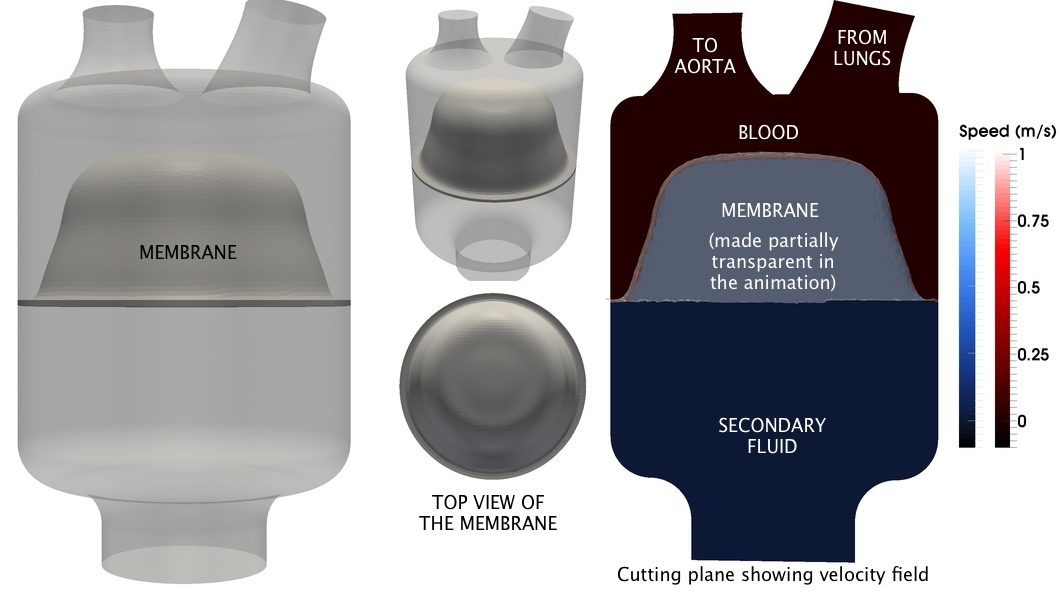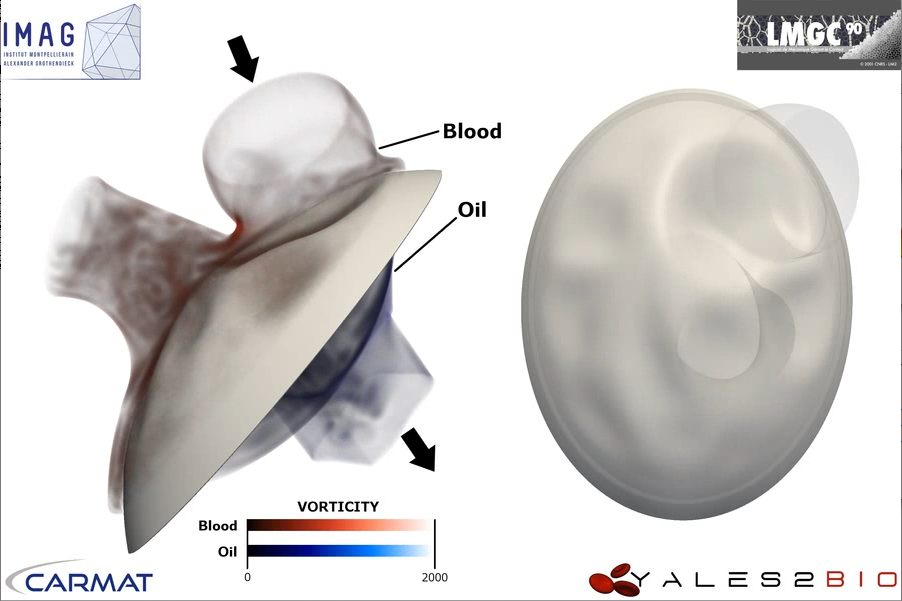Flow within a model of artificial heart
We present here a 3D unsteady FSI computation of the hemodynamics
within an academic model of an artificial heart,
computed by S. Mendez thanks to YALES2BIO. The artificial heart works with two different fluids. In the lower part, a secondary fluid is used to move a membrane. Above the membrane, blood is forced to enter and exit the artificial heart. The upper left duct mimics the aorta and the upper right duct the pulmonary veins. The Reynolds number and the ejection volume are similar to physiological values. The resulting fluid-structure interaction problem is solved by coupling YALES2BIO and
LMGC90, the latter solving the structure problem. Five cycles are computed and displayed in the video, starting from a quiescent fluid situation. The two fluids are shown here by using two color scales for the fluid velocity displayed (red for blood and blue for the secondary fluid). This computation was performed in a joint project between IMAG and LMGC, the laboratories of Mathematics and Mechanics of the University of Montpellier, respectively. This is a collaboration with D. Ambard, F. Dubois, F. Jourdan, R. Mozul, F. Nicoud and J. Siguenza. See Siguenza et al., JCP, 322, 2016 for more details about the numerical method and benchmark test cases.
In 2015, we started a collaboration with CARMAT SA, a company developing an artificial heart. We present here a 3D unsteady FSI computation of the hemodynamics within a model of the artificial heart, performed by Anthony Larroque during his internship at IMAG and CARMAT SA. As a disclaimer, we specify here that this computation is a feasibility simulation, which does not constitute a validation of the device.


